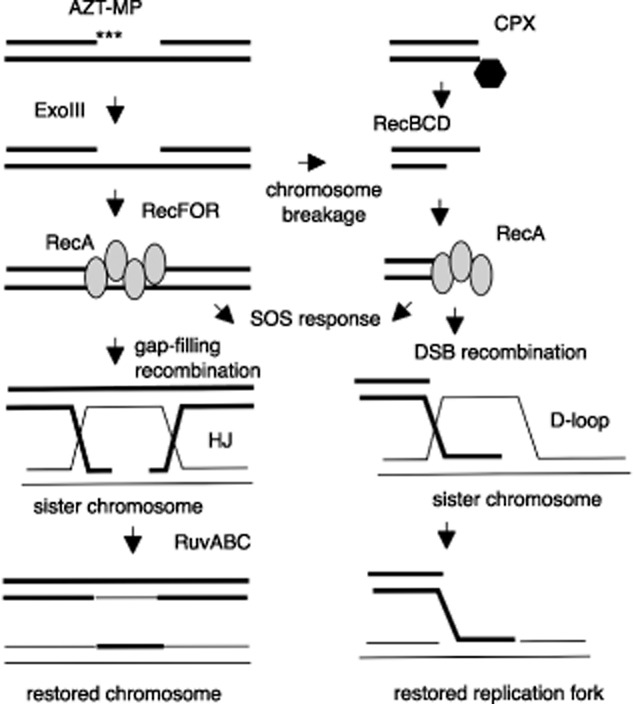Figure 1.

Possible recombination mechanisms for repair of AZT or ciprofloxacin damage. Left side: incorporation of AZT monophosphate into DNA causes chain termination during replication but can be removed by exonuclease III, leaving a replication gap. (Gaps can be converted to double-strand breaks, which are processed as shown on the right.) RecFOR promote RecA binding, which leads to induction of the SOS response. RecA also promotes recombination with the sister chromosome, producing intermediates such as Holliday junctions (HJs). After resolution, the chromosomes are healed. Right side: Ciprofloxacin traps topoisomerase II (gyrase or topo IV) covalent complexes, leading to a double-strand break. RecBCD resects the break and loads RecA, which signals the SOS response and promotes recombination with an intact sister chromosome to produce a displacement loop (D-loop) structure. Resolution of the D-loops restores a replication fork.
